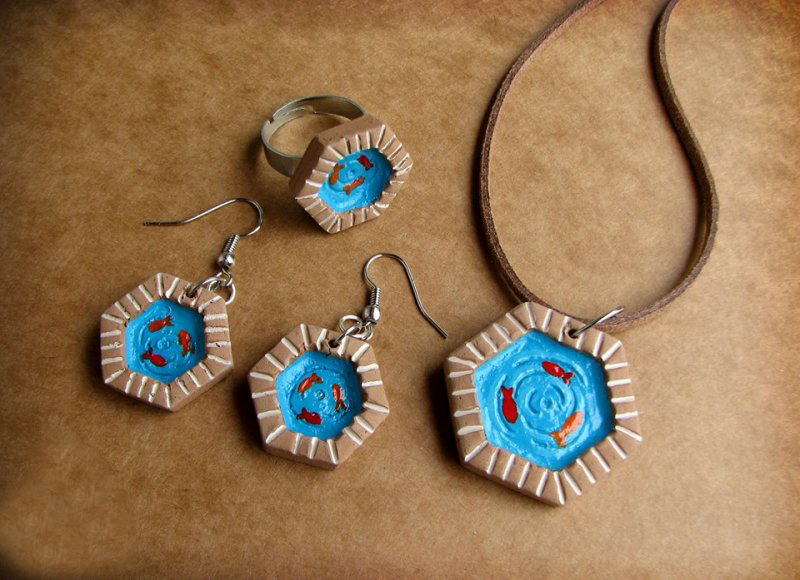Niloufar Eskandariyan who is educated in graphic design, in addition to her activities in the field of advertising, makes clay jewelries. “No one has yet used clay for making jewelry in the country, so I thought I would.”
Being interested in Iran’s traditional architecture, she started her work with shapes of traditional pools, fish and antique tiles, “since the designs are in concordance with clay material. For designing jewelry, I mainly use old Iranian symbols,” she adds.
Explaining her work she said: “Sometimes I replicate the same design of old art objects, but most of the time they give me an inspiration based on which I create new designs,” Honaronline reported.
After first drawing the patterns, she creates them on clay by using specific tools. “After blow drying, I bake it in the oven; then I color the tile and apply a clear protective coating dye,” she adds.
The jewelries are coated with different layers and therefore don’t break when they fall; but may snap if pressure is applied.
“Most of the people who see my artworks fall in love with them, especially expatriate Iranians. The artworks help them revive old memories of their grandma’s old and cozy homes,” she says, “and that’s what I want.”
In addition to online sales, she sells the artworks in two stores in Tehran and Mashhad. “We also have a store in Australia owned by Iranians.”
Figurines
From the early ages, Iranians were interested in expressing their artistic ideas through clay forms that are effective and perhaps even pleasing. The earliest objects found in Iran are clay figurines found in the excavation of a Neolithic village at Tepe Sarab near Kermanshah (about 6000-4000 B.C.).
Also history of tile (glazed brick), manufacture and decoration in Iran, goes back to the prehistoric period. It has an important position among the various decorative arts in Iranian architecture. This form of art was used to decorate palaces, public buildings, monuments, mausoleums, and religious buildings, such as mosques and theological schools.
The art of tile manufacturing reached its peak of perfection and beauty at the end of the 13th century. Moraq tiles (mosaic style) panels created with this technique were made to withstand the elements of time. “Tiles in such colors as yellow, blue, brown, black, turquoise, green and white were cut and carved into small pieces according to a previously prepared pattern,” says the Iran Chamber Society. Further, these pieces were placed close together and liquid plaster poured over to fill in all the openings and gaps. After the plaster dried and hardened, a large single piece tile panel was created, which was then plastered onto the required wall of the building.


